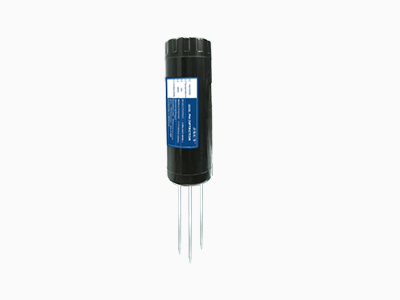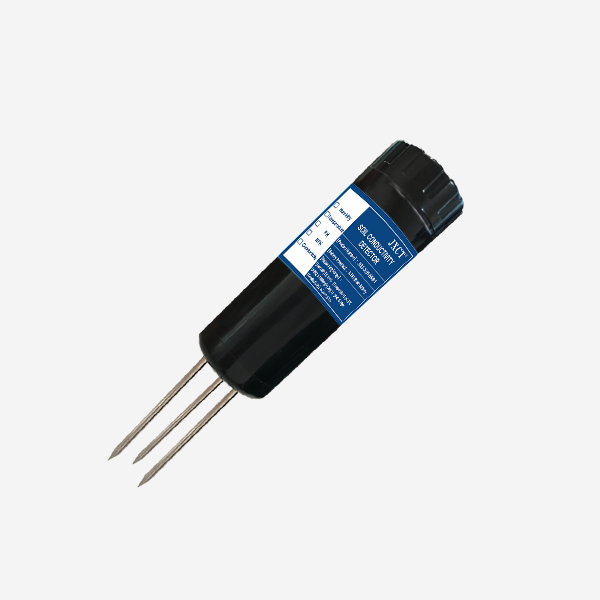Soil is the foundation of agriculture, providing essential nutrients and support for plant growth. However, managing soil health and fertility is a challenging task for farmers due to various factors such as climate change, land degradation, and intensive farming practices. Traditional soil management techniques rely on manual labor and time-consuming field observations, making it difficult to monitor and control soil conditions accurately. To address these challenges, researchers have been developing innovative soil sensor technologies that can provide real-time data on soil properties and help farmers make informed decisions about crop management. In this article, we will explore the recent advances in soil sensor technology and their potential impact on improving crop management practices.

Types of Soil Sensors:
Soil sensors can be classified into several categories based on their measurement principles and applications. The most common types of soil sensors include:
Electrical Conductivity (EC) Sensors:
These sensors measure the electrical conductivity of the soil solution, which is an indicator of soil salinity and water content. EC sensors are widely used in irrigation management to optimize water usage and prevent salt buildup in the soil.
pH Sensors:
pH sensors measure the acidity or alkalinity of the soil, which affects nutrient availability and plant growth. pH sensors are commonly used in precision agriculture to adjust soil pH levels for optimal crop growth.
Moisture Sensors:
Moisture sensors measure the volumetric water content of the soil, which is crucial for irrigation scheduling and preventing water stress in crops. There are different types of moisture sensors, including capacitive, resistive, and time-domain reflectometry (TDR) sensors.
Temperature Sensors:
Temperature sensors measure the temperature of the soil, which affects seed germination, root growth, and microbial activity. Temperature sensors are used in precision agriculture to optimize planting dates and manage pests and diseases.
Nutrient Sensors:
Nutrient sensors measure the concentration of essential nutrients in the soil, such as nitrogen, phosphorus, and potassium. Nutrient sensors are used in precision agriculture to apply fertilizers only when needed and reduce environmental pollution.
Recent Advances in Soil Sensor Technology:
The development of soil sensor technology has witnessed significant advancements in recent years, driven by the increasing demand for sustainable and efficient agricultural practices. Some of the recent advances in soil sensor technology include:
Wireless Sensor Networks:
Wireless sensor networks enable the deployment of multiple sensors in a field to collect data from different locations simultaneously. This allows farmers to monitor soil conditions over large areas with minimal effort and cost. Wireless sensor networks also facilitate real-time data transmission to farmers’ smartphones or computers, enabling them to access information on-the-go.
Multi-parameter Sensors:
Multi-parameter sensors combine multiple measurement functions into a single device, reducing the need for multiple sensor installations and minimizing errors caused by misalignment or drifting. For example, some multi-parameter sensors can measure both moisture content and temperature, providing a comprehensive view of soil conditions.
Energy-efficient Sensors:
Energy-efficient sensors use low power consumption designs and renewable energy sources such as solar panels or piezoelectric devices to extend battery life and reduce maintenance costs. This is particularly important for remote or hard-to-reach areas where frequent battery replacement is not feasible.
Machine Learning and Artificial Intelligence:
Machine learning and artificial intelligence algorithms can analyze large amounts of soil data collected by sensors to identify patterns and predict future trends. This enables farmers to make more informed decisions about crop management based on predictive analytics rather than relying solely on historical data.
Applications of Soil Sensor Technology in Crop Management:
Soil sensor technology has numerous applications in crop management, including:
Irrigation Scheduling:
Soil sensors can provide real-time data on soil moisture content, allowing farmers to optimize irrigation schedules and reduce water usage without compromising crop yield or quality. This can lead to significant cost savings and environmental benefits.
Fertilizer Application:
Soil sensors can help farmers determine the optimal timing and amount of fertilizer application based on nutrient levels in the soil. This can improve fertilizer efficiency, reduce environmental pollution, and minimize crop damage caused by excessive fertilization.
Pest and Disease Management:
Soil sensors can detect changes in soil chemistry that may indicate the presence of pests or diseases. Early detection of pest or disease outbreaks allows farmers to take timely action to prevent crop loss and reduce reliance on chemical pesticides.
Plant Growth Monitoring:
Soil sensors can provide insights into plant growth dynamics by measuring parameters such as plant height, leaf area index, and biomass accumulation. This information can help farmers assess crop health and make decisions about harvesting, pruning, or planting new crops.
Soil Health Assessment:
Soil sensors can provide valuable information on various physical and chemical properties of the soil, helping farmers develop strategies for improving soil health and reducing soil degradation. This includes monitoring soil structure, organic matter content, and nutrient cycling processes.
Challenges and Future Prospects:
Despite the many benefits of soil sensor technology, there are also some challenges that need to be addressed before it can be widely adopted in agricultural practice. Some of these challenges include:
Cost: The cost of soil sensor technology remains a barrier for many small-scale farmers who cannot afford expensive equipment. However, as technology continues to evolve and become more affordable, it is expected that soil sensor technology will become more accessible to a wider range of farmers.
Standardization:
There is a need for standardized protocols for interpreting soil data collected by different types of sensors to ensure consistency and accuracy in decision-making processes. This requires collaboration between researchers, farmers, and policymakers to develop common standards for soil sensor technology.
Data Interpretation:
Farmers may find it difficult to interpret large amounts of soil data generated by sensor networks without proper training or guidance. Therefore, there is a need for educational programs that teach farmers how to use soil sensor data effectively for crop management purposes.

Integration with Other Technologies:
Soil sensor technology needs to be integrated with other precision agriculture technologies such as drone imagery, weather forecasting, and satellite imaging to provide a comprehensive view of crop management practices. This requires interoperability between different technologies and platforms.
In conclusion
soil sensor technology has the potential to revolutionize agricultural practices by providing real-time data on soil properties and enabling more informed decision-making about crop management. With continued research and development efforts, it is expected that soil sensor technology will play an increasingly important role in ensuring food security and sustainability in the future.
